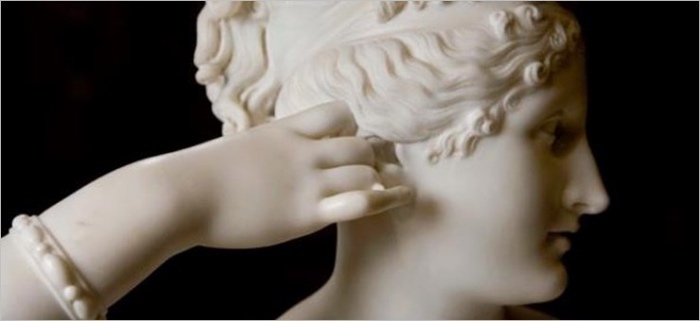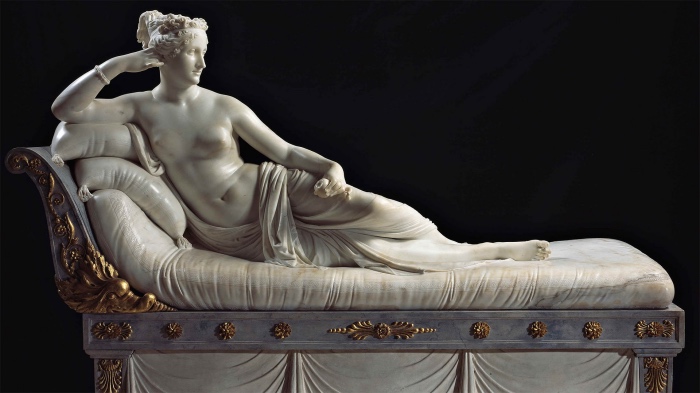Pauline Bonaparte: who she was and where you can see Canova’s sculpture
PAULINE BONAPARTE: WHERE YOU CAN SEE CANOVA’S SCULPTURE, WHO SHE WAS AND WHY CANOVA PORTRAYED HER AS VENUS VICTRIX (OR VENUS VICTORIOUS)
Pauline Bonaparte was Napoleon Bonaparte’s sister and the wife of Prince Camillo Borghese. Her name is famous because she was portrayed as Venus by Antonio Canova, who made her splendid and immortal.
The whiteness of the marble and the perfection of each detail of this statue made Canova’s Pauline Bonaparte one of the most captivating works of art ever.
In this post I’ll explain who Pauline Bonaparte was, why Canova portrayed her as Venus, and where the statue is located.
WHY CANOVA PORTRAYED HER AS VENUS VICTRIX (OR VENUS VICTORIOUS)
Around 1805 Canova was commissioned to carve the statue by Pauline’s husband, when the woman was 25 years old but was already a socialite, and was at the peak of her social success.
In fact, in 1804, Napoleon had proclaimed himself Emperor of the French and Pauline Bonaparte had assumed the title of Imperial Highness.
To create this sculpture Canova chose a theme from Greek mythology.
He portrayed “Pauline Bonaparte as Venus Victrix (or Venus Victorious)” while holding an apple in her left hand evoking Venus’ victory in the contest between the three most beautiful goddesses of Olympus (Hera or Juno, Athena or Minerva, and Aphrodite or Venus) for the prize of a golden apple addressed “To the Fairest”.
The story is that of the Judgment of Paris and the winner of the contest was Venus and Canova, representing Pauline in the guise of the goddess, compared Napoleon’s sister to Venus.
If you have never seen this statue in person, you are probably wondering why it is so amazing.
Canova created a real masterpiece.
Each detail of the artwork deserves a particular attention: for example, the pillows have a thickness different from the veils wrapping Pauline’s body, and the statue is not fixed, but it can move.
In fact, the couch where Pauline Bonaparte lies on hides a mechanism that allows the sculpture to be rotated.
This way a viewer could admire the statue from all angles without moving himself/herself.
WHERE YOU CAN SEE PAULINE BONAPARTE
The statue was completed in 1808, and was moved to Camillo Borghese and Pauline’s house in Turin, and then, when they moved to Rome after Napoleon’s fall, they brought the statue with them.
And so it was that “Pauline Bonaparte as Venus Victrix (or Venus Victorious)” arrived at Palazzo Borghese in the Campo Marzio in Rome, and later, in 1838 at the Casino Pinciano.
The fame of this sculpture spread so rapidly that several people asked to admire it.
In 1889 the statue was placed in the Room I of the Borghese Gallery where is still on display for all visitors of the Roman museum.

Follow me on:
About me
In this blog, I don't explain the history of art — I tell the stories that art itself tells.




